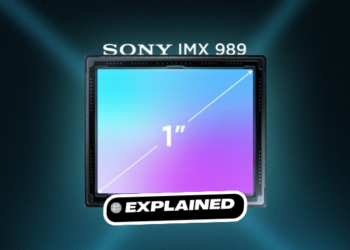Pixel Binning: In the past several years, there have been tremendous developments made to smartphone cameras, offering consumers with increasingly advanced photographic capabilities. Pixel binning is an important method that has significantly contributed to the progress of mobile photography. Because of this technology, image quality as well as low-light performance and general camera functionality have seen substantial improvements. The feature has completely revolutionised photography on smartphones. In this article, we will examine the idea of pixel binning shedding light on its advantages.
What is Pixel Binning?
What exactly is pixel bundling?
First things first: in order to get a handle on the idea of pixel binning, we have to know what a pixel is. The term “pixel” refers to each of the photosensitive elements that are located on the image sensor. Every single pixel is responsible for grabbing light and transforming it into an electrical signal. It is then sent on to be processed and turned into the final image.
Pixel binning is a method in which adjacent pixels are “binned” or combined together to create a single, larger “super pixel.” Instead of collecting information from each individual pixel, many pixels are combined into one. The camera’s detail capture, noise reduction, and low-light sensitivity are all much improved by this method.
 How Does Pixel Binning Work?
How Does Pixel Binning Work?
Pixel binning is primarily achieved through hardware and software integration. Here’s a simplified explanation of the process:
- Hardware: Smartphone manufacturers incorporate a camera sensor with larger pixel sizes. Generally, larger pixels have a greater surface area and can capture more light. The sensor’s pixel layout is designed in a way that enables grouping of adjacent pixels for binning.
- Software: The smartphone’s image processing algorithms play a crucial role in pixel binning. When the camera is capturing an image, the software analyzes the input data from the sensor and identifies adjacent pixels that can be binned together.
- Binning Process: Once the adjacent pixels are identified, their electrical signals are combined to create a single, larger super pixel. The software then processes the combined data, resulting in a final image with improved details and reduced noise.
Advantages of Pixel Binning
Pixel binning offers several benefits that have revolutionised smartphone photography:
1. Improved Image Quality
Pixel binning improves image quality because it increases the quantity of light captured by merging the data from numerous pixels. This method improves image quality in a number of ways, including colour rendering, sharpness, and dynamic range.
2. Improved Low-Light Performance
The potential of pixel binning to improve photography in low light is one of the most notable benefits of using this technique. In low-light conditions, the camera is able to gather more light because to a process that combines the electrical impulses produced by many pixels. This results in images that are brighter, clearer, and have lower noise levels. As a result, users are able to capture excellent photographs even when the lighting conditions are difficult.
3. Higher Resolution Rates
Even though technique involves merging pixels that are next to one another, pixel binning does not automatically result in a lower resolution for the final image. In point of fact, it is capable of improving resolution by making use of additional data from neighbouring pixels in order to produce an image that is richer in detail. It can produce amazing photographs with exceptional detail and clarity, which is especially noticeable in smartphones that have sensors with a high megapixel count.
4. Faster Auto-focus:
Additionally, the feature can make the auto focus process go more quickly. Through the utilisation of data from numerous pixels, the camera is able to collect more information about the scene, which ultimately results in improved auto-focus performance that is both quicker and more precise. Users are able to obtain clear photographs of subjects that are moving quickly or in scenarios that require them to focus quickly thanks to this feature.
Final Words
The process of pixel binning has emerged as a key component of smartphone photography. It has fundamentally altered the way in which we capture and share moments. This technology improves image quality, as well as low-light performance, resolution, and autofocus capabilities. It does this by merging pixels that are next to one another. The convergence of technology and software in today’s smartphones enables advanced image processing, which in turn results in photographs that are just as breathtaking as those taken by traditional cameras. We may anticipate many further developments in smartphone cameras as a result of the ongoing evolution of pixel binning, which will make mobile photography an even more viable option.
If you are interested in trying out Pixel binning, you can find this feature working on premium smartphones such as
- Apple iPhone 12 Pro and iPhone 13 Pro: Apple’s flagship iPhone models utilize this techniques to enhance image quality, low-light performance, and computational photography capabilities. They feature larger camera sensors and advanced image processing algorithms for superior photography results.
- Samsung Galaxy S21 Ultra: The feature is used in Galaxy S21 Ultra’s camera. This is one of the old model among the list that has got this feature.
- Pixel 6 Pro: The Pixel 6 Pro uses computational photography, including pixel binning. The phone uses bigger pixels and combines nearby pixels to improve image quality in low-light environments while keeping high resolution.
- Xiaomi Mi 11 Ultra’s primary camera sensor uses this feature. The 50-megapixel camera and powerful image processing algorithms produce high-quality photographs with increased low-light performance and dynamic range.
- Sony Xperia 1 III: The feature is also used in Xperia 1 III. Its bigger sensor and powerful image processing algorithms merge pixels to produce high-resolution, low-noise photos.




![Sora Open AI: The AI Video Generating Tool [Explained]](https://curioussteve.com/storage/2024/03/Open-AI-Sora-Explained-120x86.webp)



![Sora Open AI: The AI Video Generating Tool [Explained]](https://curioussteve.com/storage/2024/03/Open-AI-Sora-Explained-350x250.webp)

![Sketch.metademolab: Bring children’s drawings to life [Explained]](https://curioussteve.com/storage/2023/08/Sketch.metademolab-350x250.webp)

Discussion about this post